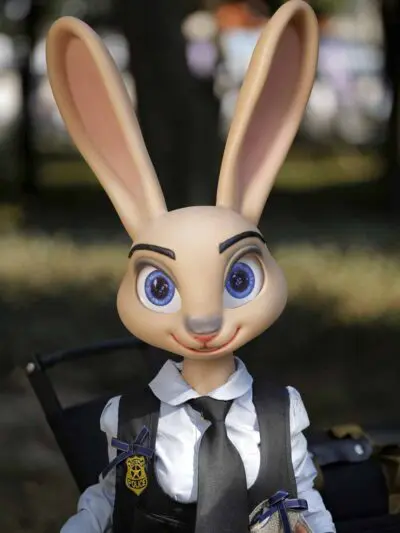Exploring Anthropomorphism with Animal Sexdoll Figures
In the realm of adult toys, the emergence of animal sexdoll models sparks curiosity and controversy alike. These lifelike replicas of animals blur the lines between fantasy and reality. Thus, this prompts questions about the nature of human attachment, anthropomorphism, and ethical considerations.
In this article, we delve into the phenomenon of animal sexdoll models. Further, we’ll examine their role as anthropomorphic extensions and the implications they raise for society, culture, and the human-animal bond.
Understanding Anthropomorphism
Anthropomorphism is the attribution of human traits, emotions, or intentions to non-human entities. It is a fundamental aspect of human cognition and culture. From ancient mythology to modern literature and art, humans have long projected their own experiences and perspectives onto animals. Humans imbue them with personalities, emotions, and motivations.
Anthropomorphism reflects our innate desire to relate to the world around us and find meaning in our interactions with animals. By anthropomorphizing animals, we bridge the gap between human and non-human worlds. To seek companionship, empathy, and understanding in our relationships with our furry, feathered, and finned counterparts.
Animal Sexdolls - Bridging Fantasy and Reality
These sexdoll animal models represent a contemporary manifestation of anthropomorphism. These creations offer individuals the opportunity to forge emotional connections with lifelike replicas of animals. These models are crafted from silicone, TPE (thermoplastic elastomer), or other materials.
For some individuals, these models serve as companions, providing solace, comfort, and companionship. These dolls evoke feelings of warmth, affection, and nostalgia, offering a sense of familiarity and emotional support to their owners.
Moreover, animal sexdoll models can fulfill a variety of roles in human society. These range from therapeutic aids to decorative objects and collectibles. In therapeutic settings, these models are useful to alleviate loneliness and reduce anxiety. Also, these entities provide sensory stimulation for individuals with autism spectrum disorder (ASD) or other developmental disabilities.
Anthropomorphism And the Human-Animal Bond
The anthropomorphic nature of animal sexdoll models raises intriguing questions. Particularly, the questions about the nature of the human and animal bond and our perception of animals as sentient beings. By imbuing these models with human-like traits and behaviors, are we reinforcing stereotypes and misconceptions about animals? Or, are we fostering empathy, understanding, and compassion?
Critics argue that anthropomorphism can lead to unrealistic expectations of animal behavior and perpetuate myths about the needs of animals. Moreover, the sexualization of animals through animal sexdolls raises ethical concerns about consent, objectification, and the commodification of living beings.
However, proponents of animal sexdolls argue that these dolls offer a harmless outlet for human imagination and creativity. These products allow individuals to express their love for animals in a safe and non-invasive manner.
Moreover, they contend that animal sexdolls can serve as therapeutic tools for individuals struggling with loneliness, depression, or social isolation. Especially, since these entities provide companionship and emotional support in times of need.
Controversies
The proliferation of sexdoll animal models sparks ethical debates and controversies surrounding their use and implications for society. Critics argue that these models promote unrealistic and harmful stereotypes about animals, and objectify living beings. As well as commodify the natural world for human pleasure and entertainment.
Moreover, concerns have been raised about the potential impact of sexdoll animal models on human-animal relationships and interactions. Some worry that the use of these dolls may lead to a disconnection from real animals. This will diminish our appreciation for their intrinsic value and ecological importance.
Additionally, the sexualization of animals through sexdoll animal models raises ethical questions. Particularly, the questions about consent, boundaries, and the treatment of living beings as objects of desire. Proponents argue that these models offer a harmless outlet for human fantasies and desires. However, critics contend that they perpetuate harmful attitudes and behaviors toward animals.
The emergence of sexdoll animal models represents a complex intersection of technology, psychology, and ethics. Thus, this raises profound questions about the nature of human and animal relationships and the boundaries of anthropomorphism.
Furthermore, these models offer individuals the opportunity to forge emotional connections with lifelike replicas of animals. However, they also raise ethical concerns about consent, objectification, and the commodification of living beings. Significantly, it is essential to approach the phenomenon of sexdoll animal models with critical reflection and empathy.
The Therapeutic Potential of Animal Sexdolls
Human beings have an innate propensity for forming emotional connections with a variety of entities, including animal sexdoll models. These connections often extend beyond the realm of living beings to include objects imbued with symbolic meaning and significance.
In recent years, the emergence of animal sexdoll models has sparked interest in their potential therapeutic benefits. Most particularly, in the realm of animal-assisted therapy. In this section, we delve into the psychological and emotional connections that humans form with these models. Further, we’ll explore their role in promoting social and emotional well-being.
Understanding Psychological and Emotional Connections
Psychological and emotional connections refer to the bond individuals form with objects, animals, or other people. These connections provide individuals with a sense of comfort, security, and companionship. These connections can arise from a variety of factors, including shared experiences, familiarity, and attachment.
In the context of animal sexdoll models, individuals may form psychological and emotional connections with them for a multitude of reasons. For some, these models serve as companions, providing solace and support during times of loneliness or distress. For others, these models may evoke feelings of nostalgia or remind them of memories with real animals.
Therapeutic Benefits of Animal Sexdoll Model -Assisted Therapy
Animal-assisted therapy (AAT) is a growing field that utilizes interactions with animals to promote physical, emotional, and social well-being. The traditional AAT often involves live animals such as dogs or horses. Meanwhile, the use of animal sexdoll models in therapy represents a novel approach with unique therapeutic benefits.
One of the primary benefits of therapy with these models is its accessibility. Unlike live animals, which are not suitable or available for all individuals, these dolls offer a consistent and controllable tool. This accessibility makes AAT more inclusive and adaptable to diverse populations, including those with allergies, disabilities, or limited access to animals.
Furthermore, these models provide a safe and non-judgmental space for individuals to express their emotions and explore difficult feelings. Some individuals struggle with social interactions or find it challenging to open up to others. With this, the presence of an animal sexdoll can serve as a tool for communication and emotional expression.
The tactile nature of animal sexdoll models also plays a significant role in therapy, providing sensory stimulation and promoting relaxation. The act of touching and cuddling the doll can evoke feelings of comfort and security. This triggers the release of oxytocin, a hormone associated with bonding and stress reduction.
In addition to promoting emotional well-being, therapy with animal sexdoll models can also facilitate socialization and interpersonal connections. Group therapy sessions involving these models encourage collaboration, empathy, and mutual support among participants. This helps foster a sense of community and belonging.
Case Studies and Research Findings
Several studies explore the effectiveness of therapy with animal sexdoll models in various therapeutic contexts. For example, research has shown that interactions with animal sexdoll models can reduce symptoms of anxiety and depression. Also, it helps improve mood and enhance overall quality of life for individuals with mental health conditions.
In one study conducted with older individuals living in long-term care facilities, participants who engaged in regular sessions of therapy reported decreased feelings of loneliness. These individuals increased social engagement compared to those who did not participate in the therapy.
Furthermore, therapy with animal sexdoll models is effective in helping individuals with autism spectrum disorder (ASD). These figures help individuals improve social skills, communication, and emotional regulation. The animal sexdoll models provide a structured and predictable environment for practicing social interactions and building rapport with others.
The connections that humans form with animal sexdoll models offer a unique pathway to promoting social and emotional well-being. Through therapy with animal sexdoll models, individuals can experience the therapeutic benefits. These benefits include companionship, sensory stimulation, and emotional expression in a safe and supportive environment.
As research in this field continues to evolve, it is essential to recognize the potential of therapy with animal sexdoll. By harnessing the power of psychological and emotional connections, we can empower individuals to cultivate resilience and enhance life.
The Intersection of Technology and Human and Animal Sexdoll Interactions
In the landscape of technology, one fascinating intersection emerges—the realm where humans interact with animal sexdoll models. From lifelike animal robots to animatronics, technology reshapes the way we perceive and interact with these artificial companions.
In this section, we explore the role of technology in facilitating human and animal sexdoll interactions. Further, we’ll shed light on the development of lifelike animal robots and animatronics and their diverse applications.
The Evolution of Lifelike Animal Robots
The development of lifelike animal robots represents a convergence of robotics, artificial intelligence, and bioengineering. These animal sexdoll models mimic the appearance, movements, and behaviors of real animals. From household companions to educational aids, animal sexdoll robots serve a myriad of purposes. This is to meet the needs and preferences of their users.
Technological Advancements
At the heart of these animal sexdoll models lies cutting-edge technology that enables them to simulate complex behaviors. Advanced robotics systems, with sensors, actuators, and artificial muscles, imbue these animal sexdoll models with mobility, dexterity, and responsiveness. Machine learning algorithms analyze sensory inputs and environmental cues. Thus, this allows the animal sexdoll models to adapt and learn from their interactions with users and surroundings.
Applications In Education
These animal sexdoll models hold immense potential as educational tools. They provide adult learners with hands-on learning experiences and opportunities for exploration and discovery. Moreover, these animal sexdoll models can serve as interactive teaching aids. Particularly, for illustrating biological concepts, ecological principles, and animal behavior in a captivating and engaging manner.
For example, robotic models of animal sexdoll figures can serve as tools to demonstrate locomotion, anatomy, and physiological processes. Adults can observe and interact with these animal sexdoll models, gaining a deeper understanding of animal biology and ecology.
Moreover, these animal sexdoll models can facilitate immersive educational experiences. This allows adults to virtually explore natural habitats and ecosystems through augmented reality and virtual reality simulations. By integrating technology into education, these animal sexdoll models empower adults to engage with complex scientific concepts in an interactive way.
Applications In Entertainment
In the realm of entertainment, animal sexdoll models captivate audiences with their lifelike appearance and behavior. Theme parks, museums, and entertainment venues leverage animatronics technology to create immersive experiences that transport visitors to fantastical worlds inhabited by animatronic creatures.
Furthermore, these animal sexdoll models are increasingly employed in the film and entertainment industry. These bring fictional characters and creatures to life on the big screen. From fantastical beasts to mythical creatures, these robots serve as integral components of visual effects and animatronics. Further, these enhance the cinematic experience and captivate audiences with its realism and believability.
Ethical Considerations
The development of animal sexdoll models holds promise for education and entertainment. However, it also raises ethical considerations regarding the treatment and portrayal of animals.
Critics argue that the use of animal sexdoll models in entertainment may perpetuate unrealistic expectations of animal behavior. Also, this could contribute to the commodification of living beings. Moreover, there are concerns about the potential impact of animal sexdoll models on wildlife conservation and environmental awareness.
Conclusion
The intersection of technology and human and animal sexdoll interactions has given rise to lifelike animal robots and animatronics that captivate and inspire audiences around the world. From educational aids to entertainment attractions, these robots offer immersive experiences that blur the boundaries between reality and fantasy. Further, this fosters curiosity, creativity, and wonder.
As technology continues to advance, it is essential to consider the ethical implications of animal sexdoll models and their impact. Particularly, on our perception of animals and the natural world.
By embracing innovation responsibly and promoting awareness and empathy for living beings, we can harness the power of technology. With this, technology can enrich our understanding of the world and foster a deeper connection with the creatures that inhabit it.













